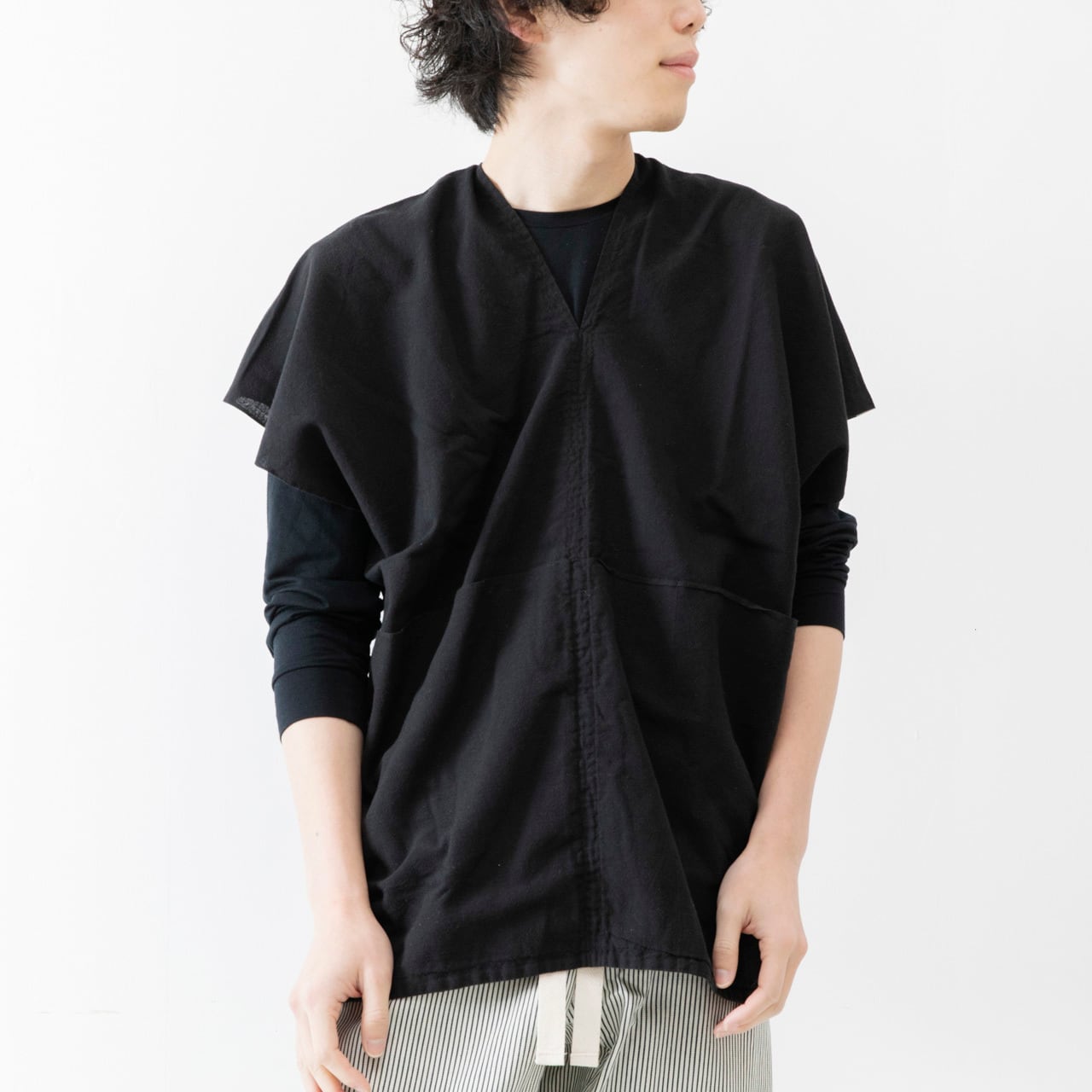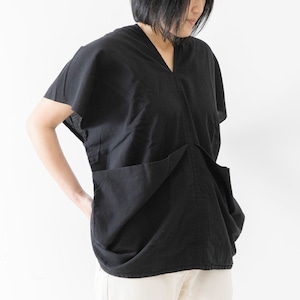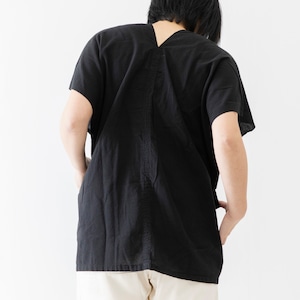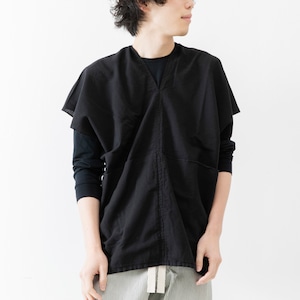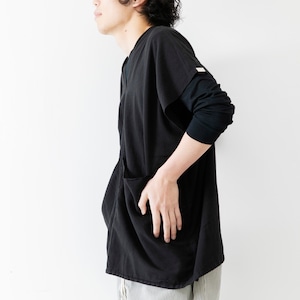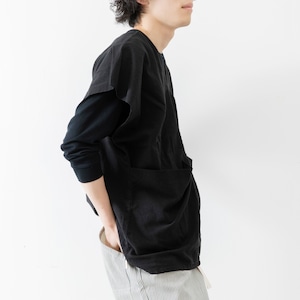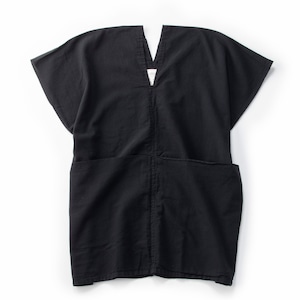SH-26 伊勢木綿 小幅貫頭衣 黒
SH-26 伊勢木綿 小幅貫頭衣 黒
※この商品は、最短で5月19日(月)にお届けします(お届け先によって、最短到着日に数日追加される場合があります)。
※こちらの価格には消費税が含まれています。
※別途送料がかかります。送料を確認する
※この商品は海外配送できる商品です。
和服の反物は洋服の生地より幅が小さい“小幅“というサイズが一般的。
このサイズを活かしたデザインの貫頭衣です。
貫頭衣とは、布地に穴を開けてかぶる弥生時代からある形。
ざっとかぶれて着脱が簡単で体に密着しないので蒸れにくいのが貫頭衣の特徴。
ただ、着用するうちに身頃が後ろに下がり首が詰まりやすいので動きやすい形ではありません。
そこで、SAGYOの小幅貫頭衣は、前身頃に大きなポケットを配置し重さを付け、穴が後ろに下がりにくく首詰まりが起きにくい設計にしています。
これぞ、高温多湿な日本の夏に最適な新しい一枚。
性別、年齢問わず着用可能です。
<染めについて>
三重県産の経(たて)糸横糸共に柔らかめの弱撚糸を使用したガーゼのような手ぬぐい生地に、倉敷市児島の職人が1枚1枚独自の技法で染め上げています。
・Ise Cotton Pullover
Japanese textile is traditionally about 35-38cm in width, which is much narrower than that of European textile. The design of pullover utilizes this narrowness fully, as it has been done so in Japan since 10,000 years ago. It is easy to wear and breathable, not sticking to your skin to cause itchness.
However, the the simplest shape of pullover has a problem that the body part of it tends to be pulled to the back making it tight and irritating around the neck. Our solution to this problem is to attach large pockets to the front body to make weight.
The textile for this pullover, gauze-like and worn with soft twist yarn in Mie prefecture, is dyed piece by piece by a craftsman in Kojima area of Kurashiki, Okayama prefecture.
This is the today's optimization to hot and humid Japanese summer. Unisex and age-free.
・伊勢木棉 小幅貫頭衣
日式服裝的布料一般比西式服裝材質要來的窄些。
將這樣尺寸活用的就是貫頭衣。
所謂貫頭衣就是將布開個洞套上的樣式,源自彌生時代。
使用三重縣產的弱撚的經紗、緯紗,製作成像紗布一樣的手拭巾材質,
再經由倉敷市兒島的職人使用獨特技法一條、一條染上。
長版上衣也是貫頭衣,可以輕易穿脫,且不會貼合肌膚,穿起來不悶熱。
只是背部的布料會往下拉扯到脖子,使得活動不方便。
所以SAGYO的小幅貫頭衣在正面加上口袋增加重量,設計成讓領口不易往後墜,不易拉扯脖子的樣子。
非常適合高溫潮濕的日本。
無論性別、年齡都可穿著。
<寸法>
着丈:72.5cm
肩幅/身幅:66cm
<素材>
綿100%(伊勢木綿 文)
<モデル身長>
<モデル身長>
女:165cm
男:172cm
伊勢木綿|Ise Tenugui Cotton

奈良時代に大和朝廷より錦織の技術が伝わり、室町時代には綿の種が伝来、土、水、天候に恵まれ、綿の一大産地になった伊勢地方。しかし近年は他産地同様、安価な化学繊維の誕生や洋服文化の台頭により産地は消滅。伊勢木綿の製造を行なっているのはたったひとつの織元のみとなってしまいました。
強く撚りをかけずに、ワタ(綿)に近い状態で天然のでんぷん糊で固めた国内最高級の純綿糸を低速でゆっくり織るため、一台の機械で一日一反(13m)しか織れない上等な手ぬぐい地です。洗っていくうちに糊が落ち、糸がワタに戻ろうとするので、使えば使うほどにふっくらとやわらかくなっていくのが特徴です。
Once a major cotton-producing region, Ise thrived thanks to its rich soil, clean water, and mild climate. Weaving skills came from the Yamato Court in the Nara period, and cotton seeds arrived during the Muromachi era.
But like other regions, Ise’s textile industry declined with the rise of synthetic fibers and Western clothing. Today, only one workshop continues to make Ise cotton.
This high-grade tenugui fabric is woven slowly on low-speed looms using Japan’s finest pure cotton yarn—minimally twisted and set with natural starch. Each loom produces just one bolt (13m) a day.
As it’s washed, the starch fades, and the yarn returns to a soft, fluffy state—growing gentler with every use.








